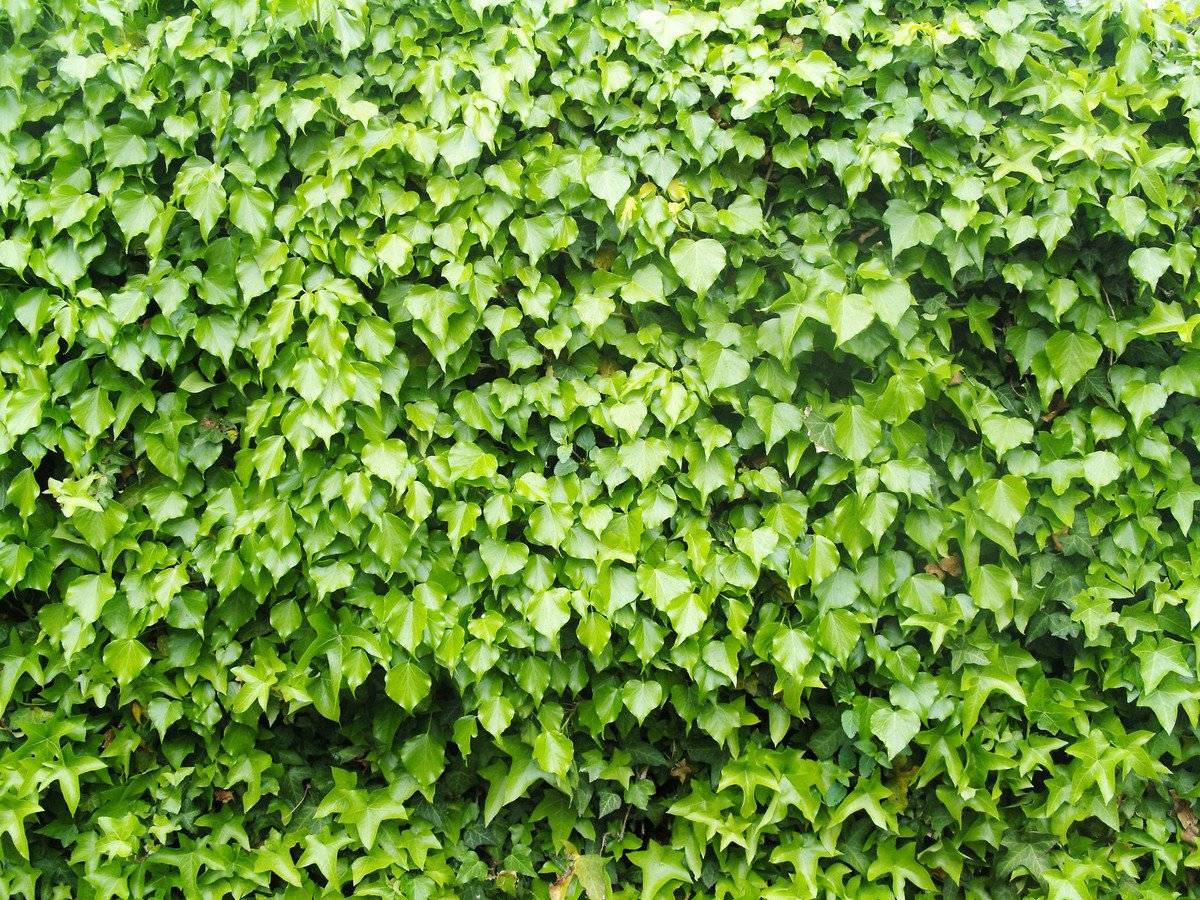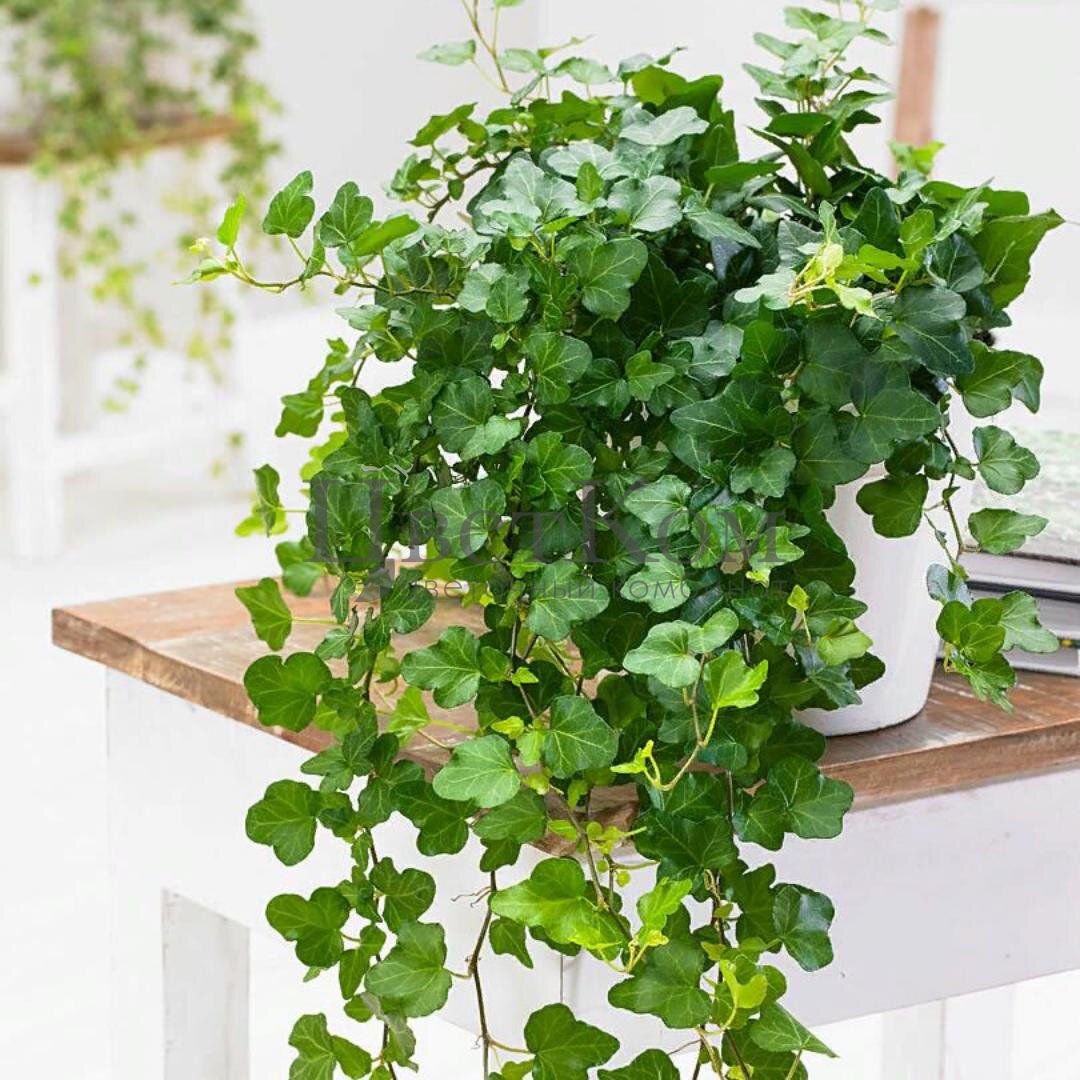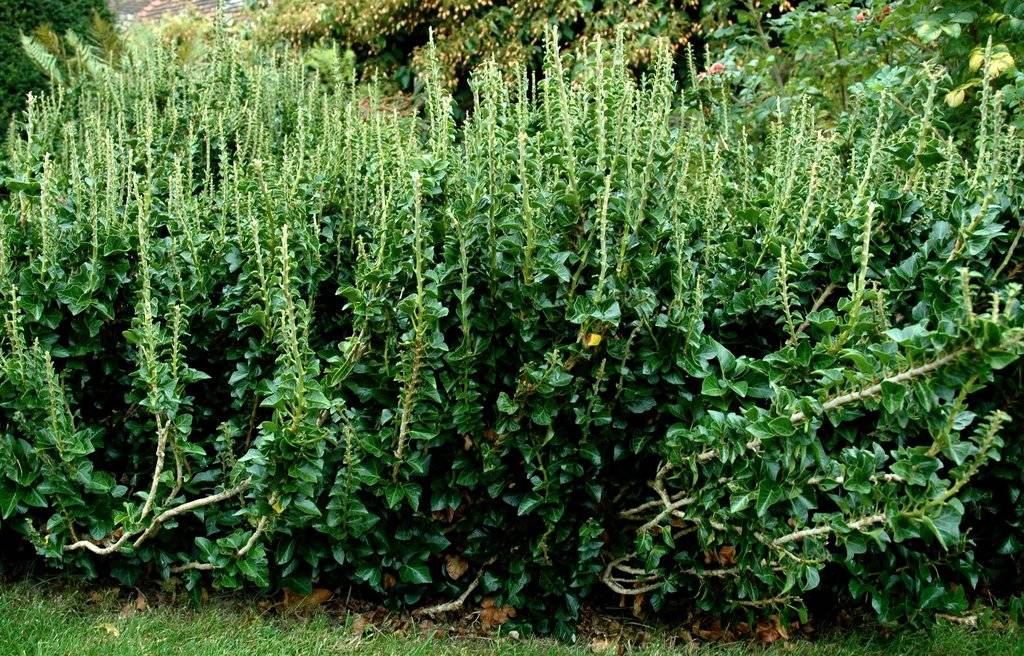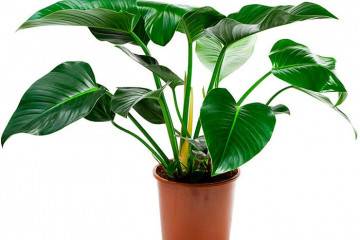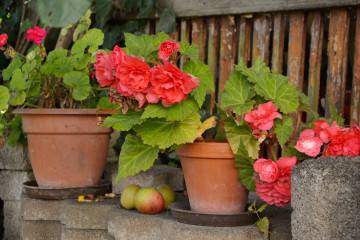Hedera helix - home care
Content:
Lianas are the favorite decorative material of florists. Decorate gazebos, decorate walls, complement flower arrangements. One of them - hedera helix - is a representative of the Araliev family.
Description and origin of the plant
Hedera helix is an evergreen vine. Homeland - Africa, south of Asia, south of Europe, Crimea. There her lashes reach 80 m. Thin and flexible, they twine around the support: columns, balconies, fences. To do this, use microscopic suckers, additional aerial roots on the stems.
Decorative properties are in the leaves. They are leathery, shiny. The color is dark green, which is why the plant is considered shade-loving. But the color of the leaves can be spotty, whitish. These varieties require more sun.
On vines that do not bear fruit, the leaves are 3 and 5 lobed. Those that bloom and bear fruit are ovoid or heart-shaped, without pointed edges.
In the house, heder ivy mix (mix) can be grown. The poisonous properties of its berries are known. But they are not formed on all types of common ivy, only on flowering varieties. And the heder flower has a nondescript - it is not honored by home gardeners. Therefore, so that the berries do not ripen, the flowers are simply cut off.
Features of home care
Picture 2 Hedera helix mix.
Liana hedera home care requires careful, in compliance with agrotechnical standards:
- Temperature. Liana does not like heat. When it is over + 20 ° С outside, the room is ventilated. The indoor plant hedera is not afraid of drafts, temperature changes.
- Lighting. The culture is shade-loving, grows well away from windows. Variegated varieties require a lot of light. But direct sunlight is not tolerated by any type of plant.
- Watering. Not plentiful. Moisturize when the soil is 5-7 cm dry. In winter, the amount of moisture is reduced. In the summer they watered 2 times a week, in the winter 1 time. Do not water at night, because the water stagnates in the ground. Hedera tolerates drought better than overflow - this is important for all indoor plant lovers to know.
- Humidity. In winter, when the air is dried by heating, and in summer, the vine is sprayed. Use settled water. Humidity is kept within 35-40%. Twice a month they arrange a warm shower, wash off the dust from the leaves.
- The soil is chosen light, nutritious. Composition: sod and deciduous land, peat, sand.
- Top dressing. Mineral fertilizers are used: in the summer, 2 times a month, in the winter, they are reduced to one. In the spring, nitrogenous fertilizing, in the summer, complex, for the winter, potash compositions.
Virulence
The fruits of the plant cause a strong allergic reaction. Dizziness, nausea, and intestinal disorders appear. Berries cannot be eaten.
But the leaves and stems are medicinal, used in folk medicine. Greens absorb staphylococci and influenza viruses.
When and how it blooms
Hedera rarely blooms when it reaches 10-12 years of age. The flowers are small, inconspicuous. They are greenish-white in color with an unpleasant odor. There are no decorative properties.
Flowers are collected in umbrellas. When they bloom, the fruits are tied.
Pruning
Pruning is a prerequisite for leaving. In the spring, the vine is rejuvenated. The lashes are cut to 1/3 of the length, and the side shoots are shortened.
This is done so that the plant gives additional shoots, bushes. As a result, the ivy becomes thick.Then it is used as a basis in flower arrangements. When the branches are not given support and are planted in hanging pots, the header becomes ampelous.
Reproduction
Propagated in different ways:
- Cuttings. Apical shoots are cut, put in water. Growth stimulant is added. You need to change the water and keep it until the roots appear. Then they are transplanted into the ground.
- Median stem cuttings. To do this, a branch with 8-10 leaves is cut from the middle of the vine. A groove is made in the sand, the stalk is laid so that the leaves are outside, then watered. On the 10-12th day, the roots will appear. The cuttings are dug out, cut, leaving a root and a leaf on each fragment. Planted in pots.
- Layers. A healthy stem is laid in a groove, sprinkled so that the top remains outside. When the roots appear, the cut is cut from the mother bush.
- Seeds. They are collected or bought. Sow on damp, compacted soil. Cover with glass. When sprouts appear, they are transplanted. It is difficult to look after them, the method is not rational.
Transfer
Caring for the hedera helix mix at home provides for a transplant. In the early years, they cross every spring. Further - as needed.
Take a larger container, fill it with drainage (expanded clay). The soil is poured, transferred by the transshipment method.
Possible problems
The plant is little susceptible to disease. But pests may appear: aphids, ticks, worms. When they appear, the heder is treated with store-bought fungicides.
Other problems:
- brown dry edges of the leaves - too hot;
- small leaves - there is not enough light;
- leaves lose color - a cramped pot, there is no light;
- growth slowed down - dry air.
Views
Hedera has 15 varieties of ivy for indoor cultivation.
Common varieties:
- An interesting hedera Erekta is an upright plant. Evergreen crop, grows up to 90 cm. Frost-resistant, grows in pots, or as an ornamental groundcover. Illumination - partial shade. Average watering, soil acidity too. It grows slowly.
- Canary ivy. Originally from North Africa. A fast-growing vine with a powerful stem. Covers the ground with a carpet, or rushes up the supports. The leaf is spotty.
- Colchis ivy. A creeping vine climbs to a height of 30 m. It has well-developed aerial roots, a powerful stem. The leaves are smooth, elastic. One-piece form, size 25 cm in length.
Liana hedera is an ornamental plant that decorates houses, parks, gardens. Unpretentious in care and loves partial shade. Easily braids pergolas, arches, walls, fences. It is prized for its green mass. The flowers are inconspicuous, the berries are poisonous. Used in folk medicine - make infusions for external use. Watering and feeding is moderate, rejuvenation is done annually. Transplant - as needed. Such a plant will surely interest both beginners and professional gardeners.
